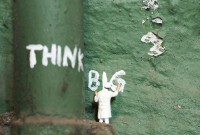- Home
- Business Processes
- Industry Knowledge
- Aerospace Industry
- Automotive Industry
- Banking Domain
- BFSI Industry
- Consumer/ FMCG Industry
- Chemicals Industry
- Engineering & Construction
- Energy Industry
- Education Domain
- Finance Domain
- Hospitality Domain
- Healthcare Industry
- Insurance Domain
- Retail Industry
- Travel and Tourism Domain
- Telecom Industry
- Leadership Skills
- eLearning
- Home
- Leadership Skills
- Project Leadership
- Triggers for Business Change
Triggers for Business Change
As we know change is inevitable as market expectations are not static, new technology is constantly being developed, and organizational responses are inevitable to these sequences. It is a simple matter of business evolution. If every manager and every employee could have some understanding of the triggers of change and their relationships with each other, then the acceptance to change would be easier.
When change is being implemented the natural tendency is to feel threatened by what is happening, if you don't think rationally and emotions and feelings take over. Sometimes, it is all seen as some kind of conspiracy by employers and they perceive that the management is concerned only to look after them. There could be elements of truth in this, but a major educational effort to get everyone in the company to expect change, and indeed to create it within their own spheres, would lead to the path of positive change.
Change is expressed through three main areas: the market itself, the technology to meet market demand competitively, the organization of resources, and the enterprise to achieve success. We also consider the tendency of companies to follow a pattern of similar life cycles. The stage in the life cycle could affect the nature of the changes which might be expected. In this article, we are looking at key triggers that necessitate the change.
1. Market Changes
The market is constantly evolving and the only way to survive in the market is to adapt to what market demands. Some examples of market-driven changes are:
- Customers demand – They want more or less of particular goods or services
- Competitors have begun to get ahead in the race due to aggressive advertising
- Government decisions and new regulations have either freed you or constrained you
- World events have changed the nature of people's expectations – Like the COVID-19 pandemic has constrained the movement of people around the world
- Price mechanisms nationally or internationally have got out of range, imports have become costlier and non-affordable
- New technology has superseded what your organization was good at – MP3 has replaced the need for cassette players
- Political changes in other countries open up opportunities or closed entry
- Raw material shortages have arisen or their prices have shot up
All these create specific changes in your business, whatever it is. The changes in the marketplace will impact your company and if the impact is negative, there will be urgency in the organization to search for new products or for the creation of new expectations from old ones. There will be the decision to explore areas of the globe where you are not previously represented; by expanding your customer base by moving to the right place in order to hold in the demand for the moment.
2. Technological Changes
Technology is naturally enough a significant part of the changing scenario. There are constant development and introduction of new technology that brings process optimization and results in reducing the people costs, or to speed up manufacturing and assembly processes or result in innovative ways of fulfilling a particular need. Technology enables meetings of customer needs, anywhere, at any time, in the form it is wanted and with the minimum of physical material and the maximum of accompanying service. Technological change has a knock-on effect so that change in this field in response to need becomes the trigger of further change. Technology can force an organization to re-establish price advantage, quality pre-eminence, or diversification into new products.
3. Organizational Changes
These changes in the market or technology will also affect the organization. If on the negative side it could result in retrenchment, a reduction in the number of employees, and a reduction in the number of levels of management. The technology itself might require new styles of organization, new sills, and the upgrading of old ones. The number of operating sites may be reduced. People may find themselves performing totally new functions, which they may like or perhaps won't like, at least to start with. The only way to stay in business may be a merger or to be the subject of a takeover, friendly or hostile. With such ownership changes, another market, technological and organizational changes may follow. In some industries, it is an endless cycle.
Most CEOs seeking to improve results do something about the organizational structure and culture of their enterprise. The organization is a matter of structuring the way in which resources are brought and kept together in order to achieve objectives. These resources include people, places, money, materials, and machines. Most changes have some implications for the ways in which resources and relationships are organized. Whether corrective action is being taken or opportunities are being seized, the organization's change will make a difference to the immediacy of reaching and speed of decision-making, information-sharing, communications, and policy implementation.
The culture change brought about by reorganizing is the most difficult handle and the ones that take the longest. They have to overcome the inhibitions of whole corporate life history, and they are likely to meet emotional resistance.
The restructuring of organizations will have to be essentially rational and it will move in different directions, depending on need.
Related Links
You May Also Like
-
Creating Highly Effective Teams
How do we create effective teams? What comes to mind when you think about an effective team? High performing teams exhibit accountability, purpose, cohesiveness, and collaboration. It is a team that works seamlessly as a whole. Everyone brings unique talents and strengths and support each other to bring out the best in everyone. How do you create one?
-
Charisma is a certain quality of an individual personality, by virtue of which he is set apart from ordinary men. Charismatic Leader gathers followers, through dint of personality and charm. Understand the meaning and concept of Charismatic Leadership and the qualities of a charismatic leader. Gain an understanding of the advantages and disadvantages of using charismatic leadership. Finally, explore the difference between charismatic and transformational leadership.
-
Four main areas in an organization that need special focus when we discuss the change in an organizational setup are organizational structure, technology, work environment, and the people. Some people call it a process, system, and people. Change in an organization includes adapting to change, controlling change, and effecting change.
-
Understanding of how individuals of different cultures interact with each other is very important. Not all individuals can adapt to the leadership styles expected in a different culture whether that culture is organizational or national. In a fast-paced business environment, developing a richer understanding and sensitivity to other cultures is a skill that leaders must possess. Learn to be effective in a cross-cultural setting.
-
Thinking & Problem Solving Skills
Today's dynamic business world demands that you make decisions that significantly boost productivity and drive competitive advantage. But how do you know whether a decision will benefit the organization? And how do you know that the decisions are based on rational and statistical reasoning? Explore how to become a dynamic problem solver with the skills to make accurate decisions.
-
All the teams are dynamic in nature and they take time to come together, they form, develop, and grow in stages, over a period of time. Teams go through five progressive stages: Forming, Storming, Norming, Performing and Adjourning. In this article, we want to introduce you to these stages of team development and certain strategies that you can use to help the team grow and develop in each of these stages.
-
Communication has as its central objective the transmission of meaning. The process of communication is successful only when the receiver understands an idea as the sender intended it. How does a message or an idea travel from one person to another? To transmit our message, we engage in a sensitive and complex process of communication, with different elements like sender, message, channels, receiver, noise, and feedback.
-
Team Development by Building Trust
As your team begins to work together, you need to establish a way each team member can exchange ideas and build mutual trust. Successful groups are built on trust and collaboration. A free exchange of ideas, in an open environment, will allow your team to get to know each other and enable you to check on how they work together. Learn some tips to help build team trust and establish personal bonds.
-
How often do you have a plan for how you are going to spend your day but you aren't able to complete the tasks on your plan because of unimportant tasks, interruptions, or your own procrastination? Wouldn't it be great to be able to manage your schedule and your time while avoiding, or at least controlling, these time stealers? Learn the strategies to manage your schedule while still handling interruptions and demands on your time.
-
Understanding Corporate Strategy
Management outlook and procedures have been revolutionized by more and more innovations over the recent years. It is no longer possible to follow traditional approaches to develop your organization's direction, its management as well its effectiveness. Senior managers need to be good decision-makers. In this section, we introduce concepts for strategy, strategic planning, strategic leadership, their exact meaning and associated terms, and how to use them.
Explore Our Free Training Articles or
Sign Up to Start With Our eLearning Courses

About Us
Learning
© 2023 TechnoFunc, All Rights Reserved










